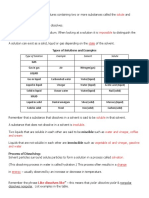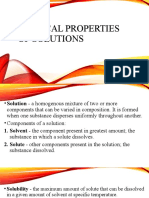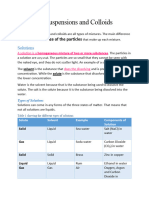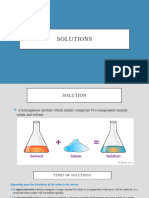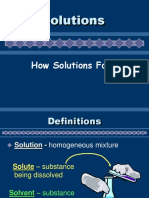0% found this document useful (0 votes)
26 views26 pagesChem Notes 3
The document explains the concepts of solubility, miscibility, and the nature of solutions, colloids, and suspensions. It defines key terms such as solute, solvent, and the Tyndall Effect, and discusses factors affecting solubility and dissolution rates. Additionally, it includes information on solubility curves and practical applications for determining solubility at various temperatures.
Uploaded by
gqdlygqmesofficialCopyright
© © All Rights Reserved
We take content rights seriously. If you suspect this is your content, claim it here.
Available Formats
Download as PDF, TXT or read online on Scribd
0% found this document useful (0 votes)
26 views26 pagesChem Notes 3
The document explains the concepts of solubility, miscibility, and the nature of solutions, colloids, and suspensions. It defines key terms such as solute, solvent, and the Tyndall Effect, and discusses factors affecting solubility and dissolution rates. Additionally, it includes information on solubility curves and practical applications for determining solubility at various temperatures.
Uploaded by
gqdlygqmesofficialCopyright
© © All Rights Reserved
We take content rights seriously. If you suspect this is your content, claim it here.
Available Formats
Download as PDF, TXT or read online on Scribd
/ 26














